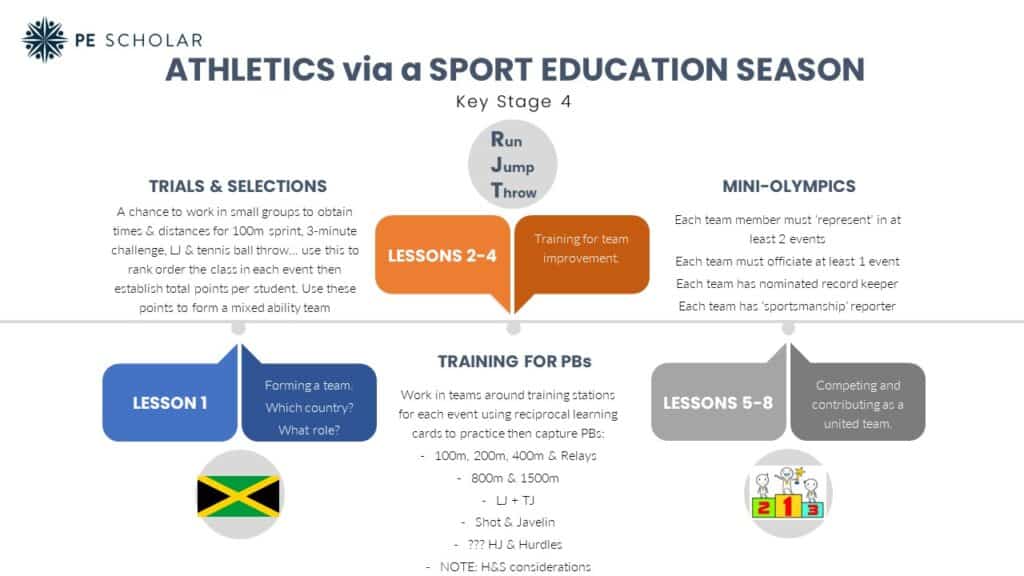It has always frustrated me how athletics looks in so many schools – a complex schedule of rotating different classes around the various events with one lesson on each and a focus on getting a time or distance written down for each student every lesson.
If you have not already tried it, I highly recommend adopting a Sport Education Season for your athletics unit of work. The format could look something like this:

As you can see above, lesson 1 is spent with students in pairs or small groups responsible for completing and collecting times/ distances for simple sprint, middle distance, tennis ball throw and standing broad jump tasks. These scores can then be inputted into tab 2 of the spreadsheet we have provided (yellow columns only) which will then rank order students for each of the events and provide an overall ranking (column N). This spreadsheet works for a single class or if you wanted to use it for a whole cohort then that works too and then you can decide how many teams you want to form for the remainder of the unit of work (using tab 1). Once decided you can allocate students to the different teams using column O (for example, ‘Ed Gamble’ who ranked 1 could be team 1, ‘Suzi Ruffel’ who ranked 2 could be team 2 etc). We have intentionally left this process as a manual one as you will likely want to think carefully about who goes with who or you could simply line up your class in order of overall ranking and number off down the line to form your teams. You will want to agree a scoring system with your students each time you use this to allocate appropriate points to administrative, coaching, officiating and performance tasks. These can be captured on tab 1 where you can also note down weekly totals and check the running totals for each team. You may want to use this editable poster to agree and display your scoring system.
For Key Stage 2 or 3 I would then spend a number of lessons working around the different track and field events to ensure all students get the opportunity to experience and improve at each discipline but any competition within these lessons would only be between similar ranked performers from each team and more likely I would save up all competition for towards the end of the unit of work with a mini-Olympic format whereby every student must represent their team in at least 1 track and 1 field event but the team can decide who is best suited to the different events. For Key Stage 4 I would get students to spend more time on just the disciplines that are of interest to them and base myself as teacher at the events with the biggest health and safety risks. You would obviously need to adjust this approach based on the maturity and level of direct supervision different classes need and never leave students working on throwing events without teacher presence but this does allow a much more personalised approach to athletics.
The Run Jump Throw resource cards produced by England Athletics are perfect for peer to peer coaching and development in the different disciplines and we also have prompt cards within our resource library.
If successful I am sure you could work up a Microsoft Teams based version of this tracker for students to input scores directly or even a Microsoft Form for data collection that feeds into a master sheet but I wanted to keep this simple for those, like me, who aren’t the biggest Excel wizzes.
Take a look at our other Sport Education resources here.



Responses